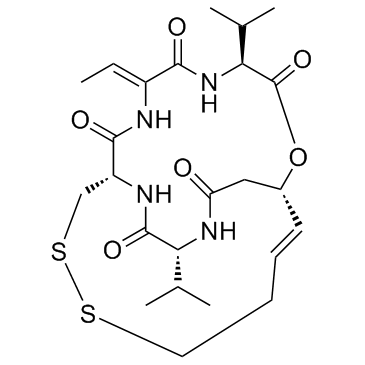In Vitro Reactivation of Replication-Competent and Infectious HIV-1 by Histone Deacetylase Inhibitors.
Riddhima Banga, Francesco Andrea Procopio, Matthias Cavassini, Matthieu Perreau
Index: J. Virol. 90 , 1858-71, (2016)
Full Text: HTML
Abstract
The existence of long-lived HIV-1-infected resting memory CD4 T cells is thought to be the primary obstacle to HIV-1 eradication. In the search for novel therapeutic approaches that may reverse HIV-1 latency, inhibitors of histone deacetylases (HDACis) have been tested to reactivate HIV-1 replication with the objective of rendering HIV-1-infected cells susceptible to elimination either by HIV-specific CD8 T cells or through virus-mediated cytopathicity. In the present study, we evaluated the efficiency of HDACis to reactivate HIV-1 replication from resting memory CD4 T cells isolated from aviremic long-term-treated HIV-1-infected subjects. We demonstrate that following prolonged/repeated treatment of resting memory CD4 T cells with HDACis, HIV-1 replication may be induced from primary resting memory CD4 T cells isolated from aviremic long-term-treated HIV-1-infected subjects. More importantly, we demonstrate that HIV-1 reactivated in the cell cultures was not only replication competent but also infectious. Interestingly, givinostat, an HDACi that has not been investigated in clinical trials, was more efficient than vorinostat, panobinostat, and romidepsin in reversing HIV-1 latency in vitro. Taken together, these results support further evaluation of givinostat as a latency-reversing agent (LRA) in aviremic long-term-treated HIV-1-infected subjects.The major barrier to HIV cure is the existence of long-lived latently HIV-1-infected resting memory CD4 T cells. Latently HIV-1-infected CD4 T cells are transcriptionally silent and are therefore not targeted by conventional antiretroviral therapy (ART) or the immune system. In this context, one strategy to target latently infected cells is based on pharmacological molecules that may force the virus to replicate and would therefore render HIV-1-infected cells susceptible to elimination either by HIV-specific CD8 T cells or through virus-mediated cytopathicity. In this context, we developed an experimental strategy that would allow the evaluation of latency-reversing agent (LRA) efficiency in vitro using primary CD4 T cells. In the present study, we demonstrate that HDACis are potent inducers of replication-competent and infectious HIV-1 in resting memory CD4 T cells of long-term ART-treated patients and identify givinostat as the most efficient LRA tested.Copyright © 2016 Banga et al.
Related Compounds
| Structure | Name/CAS No. | Molecular Formula | Articles |
|---|---|---|---|
 |
Romidepsin (FK228, Depsipeptide)
CAS:128517-07-7 |
C24H36N4O6S2 |
|
Induction of MAPK- and ROS-dependent autophagy and apoptosis...
2016-01-26 [Oncotarget 7 , 4454-67, (2016)] |
|
Non-epigenetic function of HDAC8 in regulating breast cancer...
2016-01-12 [Oncotarget 7 , 1796-807, (2016)] |
|
Valproic acid potentiates the anticancer activity of capecit...
2016-02-16 [Oncotarget 7 , 7715-31, (2016)] |
|
Profiling the anti-protozoal activity of anti-cancer HDAC in...
2015-12-01 [Int. J. Parasitol. Drugs Drug Resist. 5 , 117-26, (2015)] |
|
Identification of Novel Small Organic Compounds with Diverse...
2015-01-01 [PLoS ONE 10 , e0145994, (2015)] |